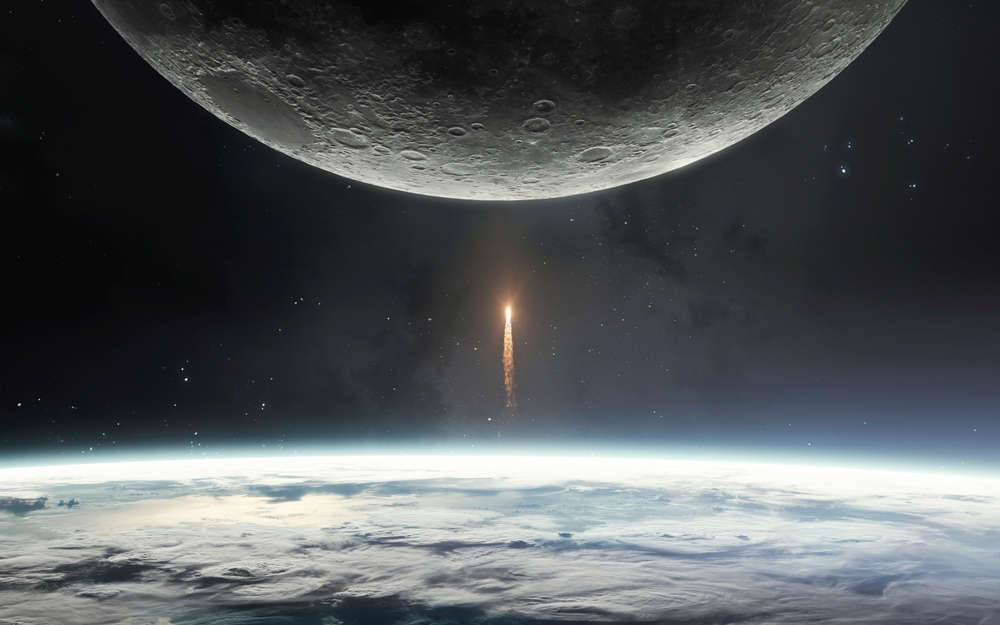How Rocket Exhaust From Moon Landings Will Threaten Future Missions
Posted on Categories Discover Magazine

The Moonrush has begun. Last year, NASA’s Artemis 1 mission flew to the Moon and back in a test of the technology that will take humans back to the surface in the next few years. The Artemis program will establish a space station called the Lunar Gateway in orbit and a base on the surface.
There will be other visitors too — both Russia and China are planning crewed missions. And some 30 uncrewed missions are in various stages of completion by spacefaring nations and private companies.
All that heralds a new age of lunar exploration, discovery and commercialization. But it also comes with risks. One problem is that the ejecta from lunar landings and launches could envelop the moon in a cloud of high-velocity dust particles that threaten other lunar missions. But just how significant this problem will be is currently unknown.
Brace For Impact
Enter Philip Metzger at the University of Central Florida and James Mantovani at the NASA Kennedy Space Center, who have attempted to quantify the risks for the first time. They say that spacecraft orbiting high above the lunar surface should be safe but others making closer approaches risk significant impacts with this dust.
The challenge in assessing the risk is that the interaction between rocket exhaust and the lunar surface is poorly understood. The evidence from Apollo missions is that landers’ rocket exhausts appeared to sweep away surface dust leaving a clean rock surface but no crater.
This sweeping occurs when the exhaust is deflected into a horizontal wind that picks up and carries dust particles. That can send ejecta into orbit at an angle that is only 2 or 3 degrees from a surface horizontal. But the formation of a crater could significantly change this angle. The likelihood of further erosion and crater formation is one of the unknowns that NASA and others will have to deal with.
The exhaust from a 40-tonne lander is likely to accelerate surface dust to speeds of around 4500 meters per second, more than enough to send them into lunar orbit and beyond. Metzger and Mantovani calculate the trajectory of these particles and say they will form a sheet of ejecta that the orbiting Lunar Gateway is likely to have to fly through several times before it disperses.
However, the damage from such impacts is likely to be minimal. The Lunar Gateway will fly in an elliptical orbit reaching distances of 70,000 km from the surface. Metzger and Mantovani say that the particles reaching this altitude are likely to be tiny — about 10 micrometers in diameter — and will in any case have decelerated due to lunar gravity. “The impact velocity will be only in the range of a few hundred meters per second since the Gateway’s orbit is slow,” they say.
“Assuming worst case, if Gateway passes through the ejecta sheet 10 times and receives 10,000 impacts per square meter each time, then after 100 landings only 0.08% of its surface will be abraded a few microns deep,” they suggest. “This is not too severe.”
But the numbers change significantly for spacecraft flying at lower altitudes. The Apollo Command module, for example, orbited at 110 kilometers. At this altitude, the density of ejecta particles will be larger and the collision velocities higher. The researchers estimate that such each square centimeter of such a spacecraft will be hit by some 7 milligrams of lunar dust.
“A spacecraft in Low Lunar Orbit may suffer extensive damage if the timing of its orbit puts it in the path of the ejecta cone from a large lunar lander,” they conclude. That suggests some careful planning will be needed to avoid such incidents.
Atmosphere Of Exhaust
NASA, of course, is aware of the problem and has already begun seeking ways to mitigate the dust problem, perhaps using shields.
But rocket exhaust will create another problem. Contrary to common belief, the Moon has a tenuous atmosphere called an exosphere that consists of gases released from the surface by processes such as the impact of solar wind and the chemical action of ultraviolet light.
The total amount of gas in the lunar exosphere is tiny, perhaps 100 tons in total. But each Apollo lander injected about 20 tons of gas into the exosphere in the form of rocket exhaust. This took many months or years to disperse.
It’s not hard to imagine future missions exceeding this rate of gas injection by a significant amount. For that reason, lunar exploration is likely to quickly overwhelm the lunar exosphere and replace it with a tenuous atmosphere of rocket exhaust.
For planetary scientists, the message is clear. They will need to study the lunar exosphere quickly and in detail before this pristine environment is lost from the Solar System forever.
Ref: The Damage to Lunar Orbiting Spacecraft Caused by the Ejecta of Lunar Landers : arxiv.org/abs/2305.12234